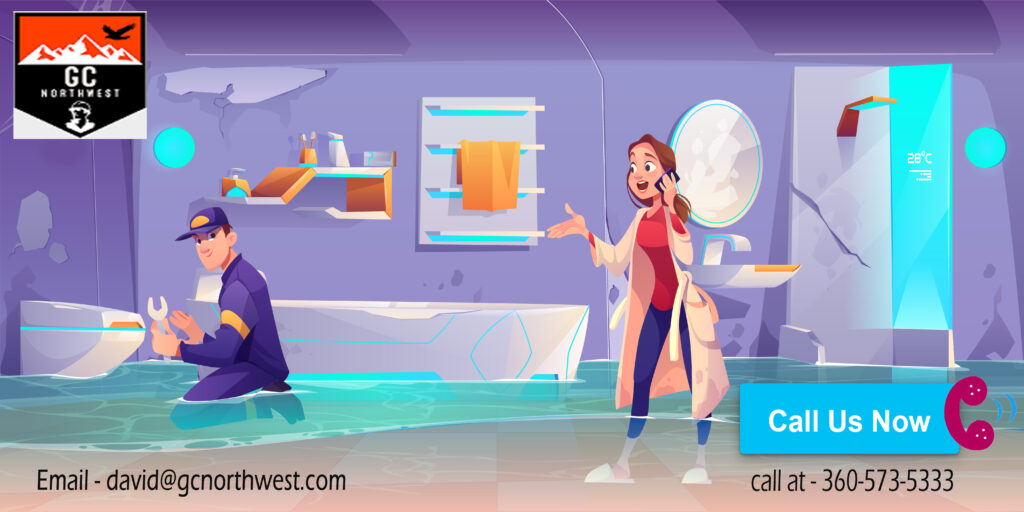
Water damage can be caused by many things like leaking pipes, burst sewer lines, severe weather, or slow plumbing leak. Any one of them can often leave your office severely water destruction. If your possessions are affected by water damage, it’s a complicated situation to know the reason and act immediately to trammel additional devastation.
Control household water damage can be a headache, especially when it leads to complications more down the line. While these repairs and preventions often require the assistance of water removal experts, there’re very few DIY steps you can follow to succor to decrease the devastation where possible.
What Does Water Damage Affect & What Locations You Should Inspect?
Water is known as nectar, but it, sometimes, can also ruin in its way – leaving you with a terrible mess to restore. As a property owner, it’s crucial to consider what locations water can gravely damage indoors or outdoors. To keep everything safe and sound, you should always inspect the following locations for devastation:
- Insulation
- Appliances
- Wood
- Drywall
- Plaster
- Framing
- Pipes
- Floor coverings
- Electrical wiring
- HVAC
As you know well water can damage your home’s foundation and if you haven’t attention, it quickly wracks up a heavy restoration bill. That’s why; it is essential to take immediate action before the damage becomes worse.
What Do You Need to Know Before Water Damage Restoration?
What will you do when it comes to water damage? Will you clean up the area yourself or call water damage restoration professionals? The first thing you would like to evaluate the condition and understand a few of the following aspects.
Water Capacity
If your home is exhausted by a small or moderate amount of water, you can usually control it yourself by having the proper equipment. On the other hand, if there is crucial flooding that’s not prevented despite your efforts or your proper tools, it might be the most useful to hire a water damage restoration expert.
If the flood has covered your area and your neighborhood is doing better in a natural disaster, your home has been harmed much by hefty water damage; it isn’t time for a DIY project. In that circumstance, you just need to follow the instructions and guidelines from your local disaster relief authorities and just leave these restorations to the water damage professionals.
Source of Destruction
Before you take action on water damage restoration yourself, you need to find out where the water is leakage or coming from. There are mainly three types of water you need to search out when you have a flooding problem in your office or home.
Neat & Clean Water: water that comes from leaky pipes or rain doesn’t contain harmful bacteria or chemicals, and it is safe to clean yourself.
Gray Water: Gray water leaks from appliances such as your dishwasher, washing machine, or toilet may be somewhat polluted. With the help of proper precautions, you can clean it yourself.
Black Water: the most harmful water is black water that comes from sewage pipes or flooding from a close water source such as a river. This water often contains health hazards and is not safe to manage yourself.
Damage Level
At the eleventh hour, you would like to evaluate the damage level. Minor destruction can often be managed by the homeowner. Large water damage is hazardous to restorative without the assistance of a water damage restoration expert. For instance, if flooding on an upper level has leaked through the floor on top of the ceiling, the damage is beyond your capacity to restore safely.
Find a Few DIY Water Damage Restoration Tips for Your Abode
When you’ve properly evaluated the situation, you first need to know these water damage restoration tips to make sure repairs are completed without more ado. The most important thing is to sort out the wet materials that begin to develop hazardous mold or fungus after 24 – 48 hours, so you don’t postpone for days. You should take an instant action to remove the water damage.
Isolate Outlets
When you have found out the water damage indoor or outdoor, the first thing is to unplug all the electronic items as soon as possible. On the other hand, you still can’t search out the severity of the water damage, it is essential to beware of appliances and gas lines as well. Making utilization of this equipment despite the situation could cause electric shocks or even blasts.
The Inspection of Mold
Some mold strains are poison to humans and create serious health problems. Many times, mold can grow faster once it infests a location, so it’s in your interest to look into growth to avoid any health perils. For small problems, you can remove the affected zone, bag it, and dispose of it without any delay. On the other hand, the severe mold infestations, you immediately need to obstruct any airflow to prevent pollution and then hire a mold removal expert. Sometimes, mold can seem inside the walls, floors, and wet appliances, so the inspection must be ongoing throughout the water damage restoration.
Remove Water Damaged Objects
Even if your permeable objects including carpet or insulation are sunk into the water, you’ve to dispose of them soon to avoid mildew. It is necessary to remove the water from the ceiling and floors first. It means that the unsealed cement, drywall, and furniture need to be addressed and changed so the structure of the home can help from water damage repair.
